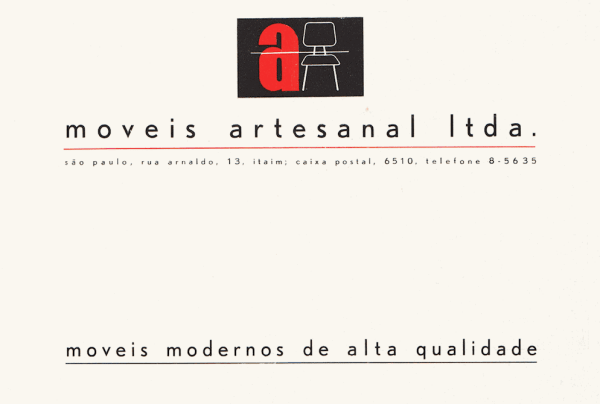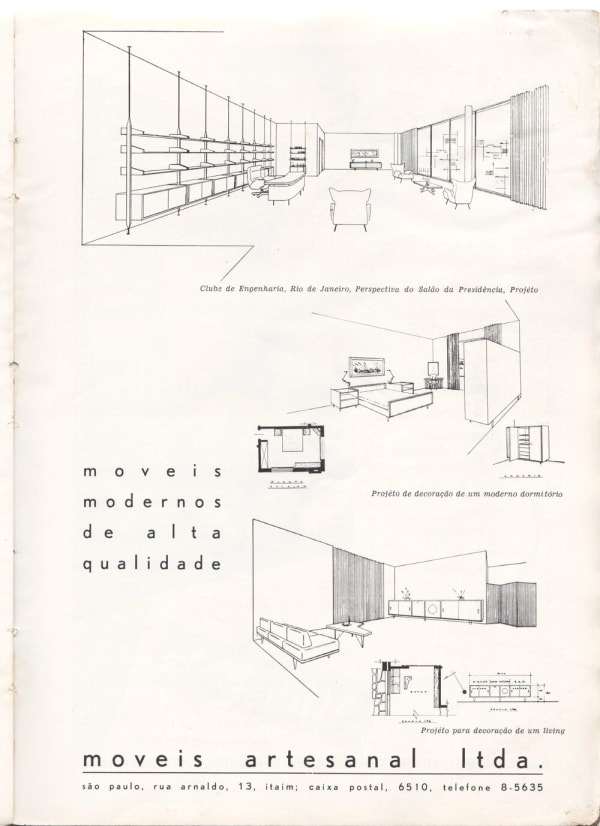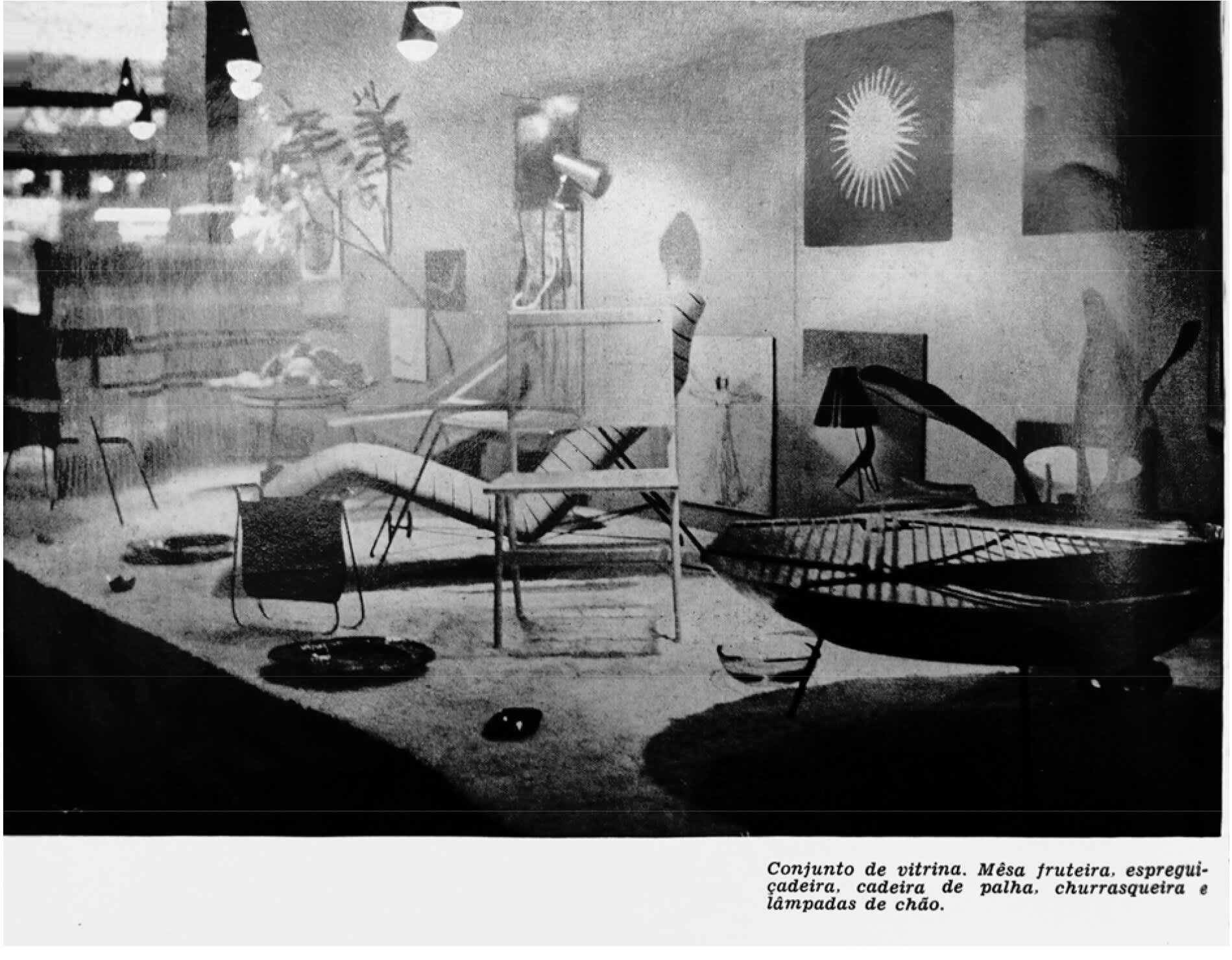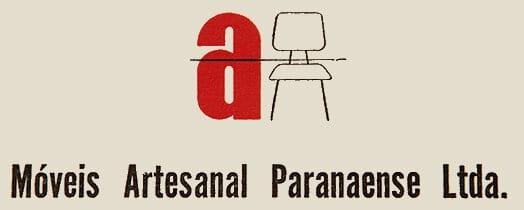-
MÓVEIS ARTESANAL
APRIL 29, 2020
-
The company Móveis Artesanal was a pioneer in the country in allying with success to a design office with a modern language, and with a serial system of fabrication in innovative commercial spaces. Founded by Carlo Hauner in 1950, who later partnered with Martin Eisler and Ernesto Wolf, Artesanal sold furniture designed by the first two, as well as some pieces created by Ernesto Hauner in other shops. Carlo Hauner also had Sérgio Rodrigues in the department of interior designing, and with Georgia Hauner managing the display window and the store’s internal scenography. [1]
-
Based at Street Arnaldo, Itaim Bibi, São Paulo, the Hauner established themselves in the area. The factory had about 2 thousand square meters, newly imported machinery, specialized employees who were mostly Italian immigrants, or Italian direct descendants. The factory was complete, the metallurgy was all done there, and even though it could not be considered a rigid industrial production, there was still some scale of seriation, and some pieces were also ready-made.
-

Advertisement of Móveis Artesanal published in 1958.
-
As Martin Eisler joined as director and Ernesto Wolf joined as investing partner, the company inaugurated a second phase, with a new visual identity, but with the same language and materiality: without a modulated reasoning or decorative adornments.
According to Sérgio Rodrigues [3], the presentations of design projects had a high technical rigor and were all made by a French designer, as you can observe in the following picture: -
“Sometimes, after work, the Wolf brothers would invite the whole group to a restaurant or for a drink in Ernesto Wolf’s apartment, to read a rare book, or see a new painting. These meetings were exciting and interesting. Once, they decided that the firm needed a name with more personality. Martin Eisler was very fun and observed that “Artesanal” was not a bad name, as long as it was not used in the plural. Several names were suggested and rejected, and the conversation took a different turn. Ernesto was always a quiet person, but after some time he interrupted the conversation with one word: “Forma”. And Artesanal changed its name soon after.” [4]
— GEORGIA HAUNERIn 1953, a store with 3 floors that worked as a furniture showroom, and also sold paintings and prints, was inaugurated at Barão de Itapetininga Street. And thanks to Ernesto Wolf, investing partner, art collector, and also close friends with Ciccilo Matarazzo and José Mindlin, several art exhibitions also happened there.
Sérgio Rodrigues, recently graduated architect was, after the experience at Móveis Artesanal in Paraná, was in charge of making projects of scenery for the clients. It was Sérgio Rodrigues who hired Georgia Morpugo, Croatian who migrated to Brazil in 1946, and who graduated in high school in São Paulo and studied illustration and advertisement in Los Angeles at the Art Center School. Georgia Morpugo affirmed, in an interview with the researcher Mina Warchavchik Hugerth, that even though she already worked at an advertisement company, she dreamed of working at Artesanal because, according to her, it was the greatest representative of modernity in the city.
Georgia Morpugo started her work at Artesanal helping Sérgio Rodrigues with blueprints and residential designing, but it was her innovative ideas on expography and scenography that pleased the partners. Georgia Morpugo thus became responsible for the Gallery’s expography, as well as its showcase. -
In an interview with Hugerth [5], Sérgio Rodrigues declared: “it was really a change in the interiors of São Paulo, it was, for me, the most categorized, perfect, and conscious interiors architect that ever worked in São Paulo”.
To what concerns the clients that often visited Artesanal, Rodrigues affirms that they were very wealthy clients: company and factory directors and their wives. However, Georgia Morpugo had the impression that the majority of the clients were architects, artists, and people who worked in the field. -
 Showcase at Artesanal Gallery, 1954.
Showcase at Artesanal Gallery, 1954. -
There are some written pieces that were found about Galeria Artesanal and Móveis Artesanal until April 1955, but statements by Sérgio Rodrigues and Georgia Morpugo attest that it became Forma in 1954. [6]
MÓVEIS ARTESANAL PARANAENSE
Sérgio Rodrigues, born in 1927 in Rio de Janeiro, Brazil’s capital at the time, graduated in 1951, having worked as an assistant in the discipline of Interior Composition during his studies. In his graduation year, he was invited to integrate the team that would design the civic center in Curitiba.
Sérgio Rodrigues and Carlo Hauner met when Hauner went to Curitiba in order to sell Artesanal’s furniture to the Civic Center, and Rodrigues was in charge of its interior designing. Even though they did not manage to place Artesanal’s furniture in the design, they established a friendship and partnership. -

Logo for the Móveis Artesanal Paranaense Shop
-
"We inaugurated the store and it only lasted six months. In these six months, I can say, without overstating it, that there were plenty of visitors, it constantly seemed that the shop had a vernissage happening. Daily, in the afternoon, curious people and students passed by wanting to know about the pieces. But they did not shop there. They knew I was representing a company, and that I had some advantage over the furniture bought in São Paulo." [7]
-
NOTES
[1] HUGERT, Mina Warchavchik. Móveis Artesanal - Faculdade de arquitetura e urbanismo da Universidade de São Paulo, São Paulo
[2] Pau Brasil was a company in the furniture design sector, resulting from the association of architects Lina Bo Bardi and Giancarlo Palanti, Italians emigrated to Brazil in 1946. The company was sold to Carlo Hauner, and transformed into Móveis Artesanal – which a few years later would become the Forma company.
[3] RODRIGUES, S. Entrevista [13 de novembro de 2012]. Entrevistadora: Mina Warchavchik Hugerth. Rio de Janeiro, 2012. Gravação digital (143 min.).
[4] HAUNER, G. [texto não publicado] Texto de Georgia Hauner. Vancouver, 2011
[5] RODRIGUES, S. Entrevista [13 de novembro de 2012]. Entrevistadora: Mina Warchavchik Hugerth. Rio de Janeiro, 2012. Gravação digital (143 min.).
[6] HUGERT, Mina Warchavchik. Móveis Artesanal - Faculdade de arquitetura e urbanismo da Universidade de São Paulo, São Paulo
[7] RODRIGUES, S. Entrevista [13 de novembro de 2012]. Entrevistadora: Mina Warchavchik Hugerth. Rio de Janeiro, 2012. Gravação digital (143 min.).
This text is part of the article “The Sistematization Of Production Of Furniture By The Architects Carlo Hauner And Martin Eisler In The 1950s", written in 2019 by Isabela Milagre.
Texts and photographs content are part of Bossa Furniture creative production.

Do you love Brazilian design as much we do?
Don't miss out on our new arrivals and exclusive content signing up!
* denotes required fields
We will process the personal data you have supplied in accordance with our privacy policy (available on request). You can unsubscribe or change your preferences at any time by clicking the link in our emails.






